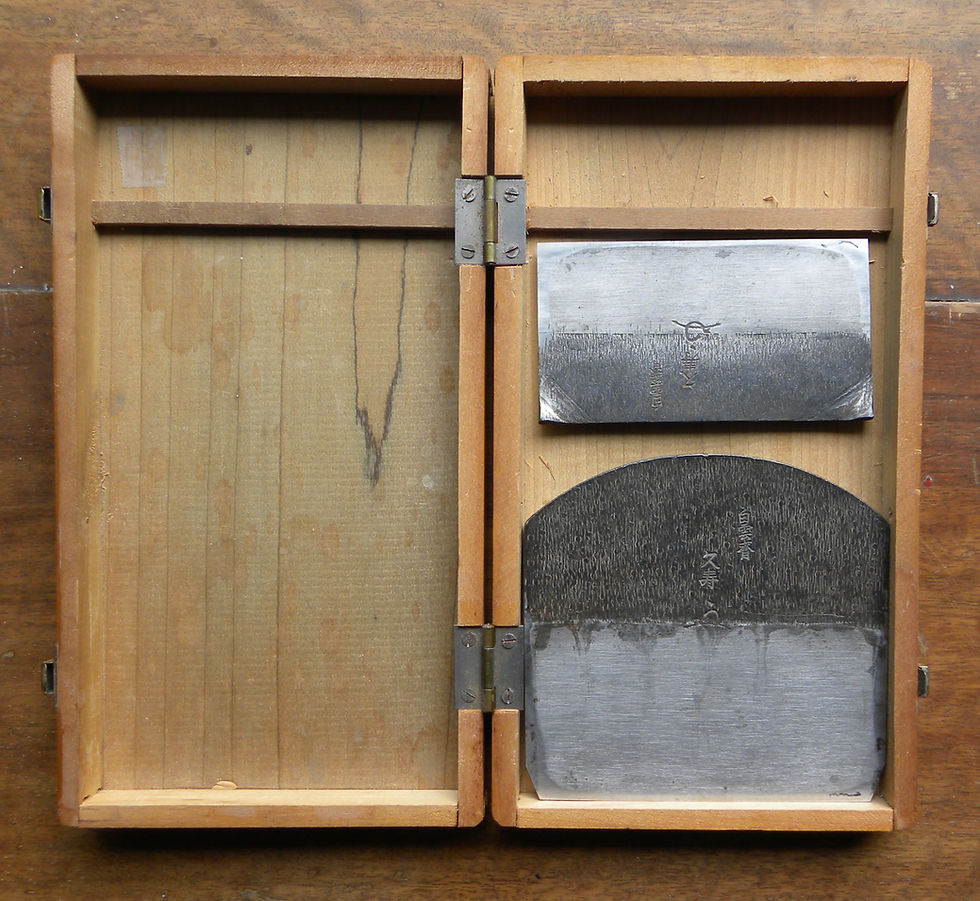The Symbiotic relationship between stone and steel
- ALEX

- Sep 21, 2023
- 2 min read
Updated: Jan 5, 2024
We who sharpen steel have a goal in mind even before we pick up the blade or lay out the stone. The goal is a target, a product of work begun and finished. In these respects, I am looking for the finished product to represent the work I have done with that particular stone upon that unique steel. Certain steels work best with certain stones, Japanese professionals have laid out this axiom for all to see regarding the sharpening and "polishing" of samurai swords. Sharpness to a blade is the obvious target, keenness when measured in microns is thrilling, but how about the adjoining 30% of cutting zone, the softer jigane-iron between the shinogi transition of upper portion of the hamon of the bevel of blade represented by soft iron. What role does that softer jigane kireha portion of the blade play in useful working. Or is it just for show? And how do we approach the refining of the two metals along these same themes?

In Japan all parts of the tool matter and demand respect. For knives or tools, they all work together, and when sharpening/honing tools & knives stone touching metal is where esthetic and productive share a platform. And this is intentional so that certain metal parts are forced or encourage to support one another.
There are distinct surfaces on these traditional Japanese knifes, and the kanna woodworkers plane and of a kamisori razor that are called the "ura". The ura must not be touched by the sharpening stone. Traditional polishers of hocho knives and kamisori razors but especially historic katana swords follow this regime. For the maintenance and restoration of katana the technique even involves the use of two recognized types of abrasive, those being Jizuya (jigane toishi) & Hazuya (hagane toishi) for those individual portions of the blade. The thesis regarding katana servicing is itself historic. The knowledge of the few tools, materials and techniques should lead to their use. Diverging from technique jeopardizes the geometry of the blade.
Under Pressure
The
Recent Posts
See AllWe are participating in the event of Kezurou-kai 2023, Saturday & Sunday, Sep. 30th & Oct.1st. Alex will have a sharpening demo and...



Comments